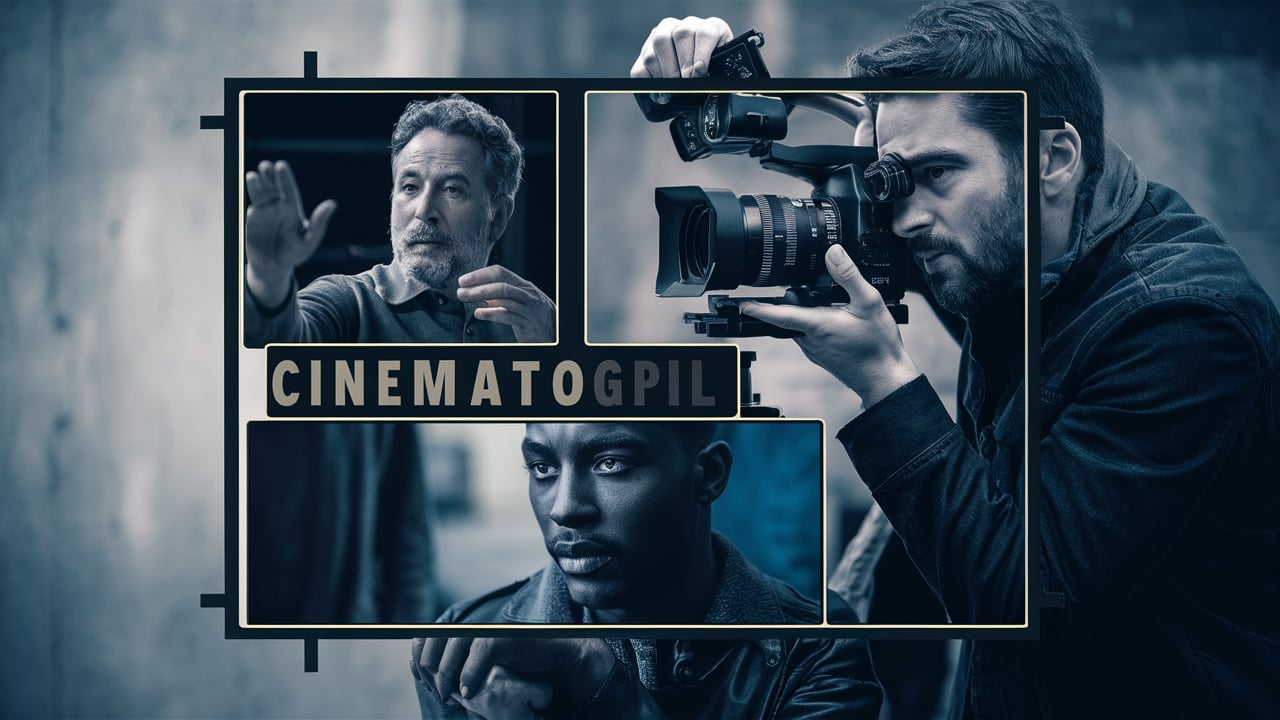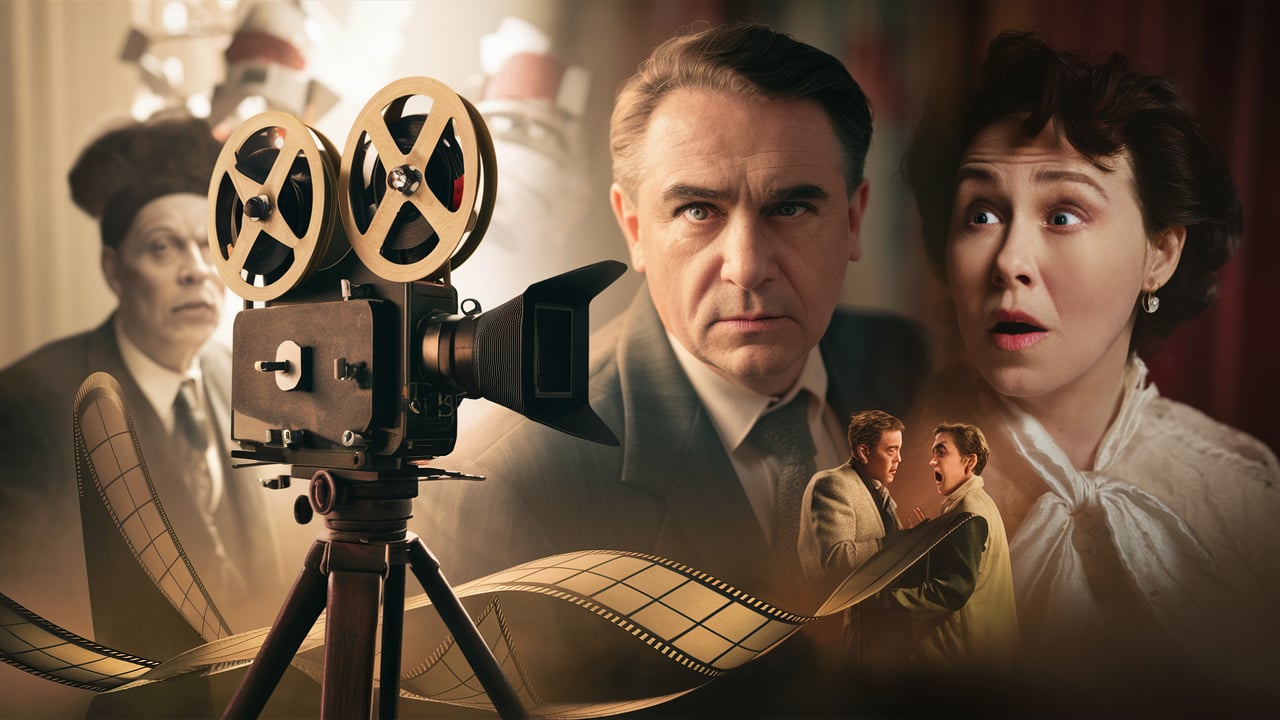Composition / Framing: This involves the careful arrangement of all visual elements within the frame. It dictates what the audience sees, how they see it, and where their eye is drawn. This includes aspects like the rule of thirds, leading lines, negative space, symmetry, and camera angles (high, low, eye-level).
Lighting: The deliberate manipulation of light and shadow. Cinematographers use lighting to establish mood, create depth, highlight subjects, reveal textures, and convey information about time, place, and emotional state. This encompasses various lighting techniques like three-point lighting, high-key, low-key, and practical lights.
Camera Movement: How the camera moves throughout a shot or scene. This can range from static shots to dynamic movements like pans, tilts, dollies, tracks, cranes, and handheld shots. Camera movement influences pacing, reveals information, creates a sense of immersion, and can even convey a character’s emotional state or perspective.
Exposure: This refers to the amount of light that hits the camera’s sensor or film. It’s controlled by ISO (sensitivity to light), aperture (the opening of the lens), and shutter speed (how long the sensor is exposed to light). Proper exposure ensures the image is neither too bright nor too dark, allowing for detail and mood to be accurately portrayed.
Color: The intentional use and manipulation of color in a film. This includes the color palette chosen for sets, costumes, and props, as well as color grading in post-production. Color can evoke specific emotions, symbolize themes, differentiate characters or locations, and contribute significantly to the overall aesthetic and mood of the film.
What is cinematography?
Cinematography is the art of making motion pictures. It involves capturing images on film or digital sensors and then manipulating those images to create an emotional effect. Cinematographers use a variety of techniques to achieve this goal, including composition, lighting, and camera movement.
Cinematography is more than just point-and-shoot photography; it is an art form that requires a great deal of skill and experience to master. A successful cinematographer must be able to work closely with the director to understand the vision for the film and then translate that vision into visually stunning images.
Whether you’re shooting a big-budget Hollywood blockbuster or a low-budget indie film, the principles of cinematography remain the same. If you want to learn more about this fascinating subject, check out our list of the 5 components of cinematography.
The 5 components of cinematography.
Cinematography is the art of making motion pictures. It is the result of a number of technical and artistic choices made by the cinematographer. The five components of cinematography are:
1. Shot composition
2. Lighting
3. Camera movement
4. Lens choice
5. Framing
A composition as an element of cinematography.
In film, the composition is one of the most important aspects of cinematography. It refers to the way in which the elements in a frame are arranged, and includes factors such as framing, placement of subjects, and use of space.
Good composition can make a huge difference to the overall impact of a scene, and can be used to create a variety of different effects. For example, careful composition can be used to create a sense of tension or unease, by placing subjects in close proximity to each other or using unusual angles.

It can also be used to create a feeling of scale or grandeur, by including a lot of empty space in the frame. Composition is an incredibly versatile tool that should be used thoughtfully in order to get the most out of it.
Framing as an element of cinematography.
Cinematography is the art of motion picture photography and filming either digitally or on film stock. It involves the control of elements such as lighting, framing, camera movement, and lenses. All of these factors contribute to the creation of a certain mood or feel in a scene.
Framing is one of the most important aspects of cinematography. It is the process of choosing what will be included in the shot and what will be left out. The frame can be used to create a sense of depth, set the tone for a scene, or highlight certain details.
Good framing is often about making use of negative space. This means using empty space within the frame to draw attention to the subject matter. It can also help to create a more dynamic composition.
Movement.
Cinematography is the art of making motion pictures. It involves the use of a camera to capture the action of a story. Cinematography also includes the use of lighting and editing to create the desired effect.
Movement is an important element of cinematography. It can be used to create a sense of action, tension, or suspense. It can also be used to emphasize certain elements of the story. Cinematographers often use movement to add excitement to a scene or to make characters more expressive.
Lighting as an element of cinematography.
Cinematography is the process of capturing light and recording images using a camera. One of the most important elements of cinematography is lighting. Lighting can be used to create different moods and atmospheres in a film. It can also be used to highlight certain aspects of a scene or character. When used correctly, lighting can be one of the most powerful tools in a filmmaker’s toolkit.
Camera angles.
Cinematography is the art of making motion pictures. It involves selecting the right camera angles to tell the story in the most interesting and effective way possible. The first thing to consider when choosing camera angles is what story you want to tell.
Each scene should have a purpose and contribute to the overall narrative. The second thing to think about is how different angles can create different moods and atmospheres. For example, a low angle can make someone seem more powerful, while a high angle can make them seem weaker.

Finally, you need to take into account the technical aspects of cinematography, such as lighting and composition. Different angles can create different effects with these elements, so it’s important to experiment until you find the perfect combination for your scene. By paying attention to all of these factors, you can use camera angles to create an unforgettable cinematic experience.
Things you should do to get the best in cinematography.
Cinematography is an important aspect of filmmaking and can make or break a movie. Here are some things you can do to make sure you get the best possible results:
1. Use a high-quality camera. This will ensure that your footage is sharp and clear.
2. Make sure your lighting is good. Poor lighting can ruin a shot.
3. Pay attention to composition. Composition is key in making a great-looking shot.
4. Use interesting camera angles and movement. This will add visual interest to your shots.
5. Shoot in different locations. This will give your film variety and make it more visually interesting.
6. Experiment with different lenses and filter effects. This can help you create unique looks for your shots.
7. Make sure your sound is good quality too!
In conclusion.
If you want to be a great cinematographer you should: learn the technical aspects of filmmaking, have a strong sense of composition, and develop your own personal style. Additionally, it’s important to be able to work well with others and have a good understanding of the director’s vision. Lastly, always be willing to experiment and take risks – it’s how the best in the field become great. Read more of our articles like who is a video producer?

I am a highly experienced film and media person who has a great deal to offer to like-minded individuals. Currently working on several exciting projects, I am a film and media practitioner for over a decade. I have achieved a great deal of success in my professional career.





